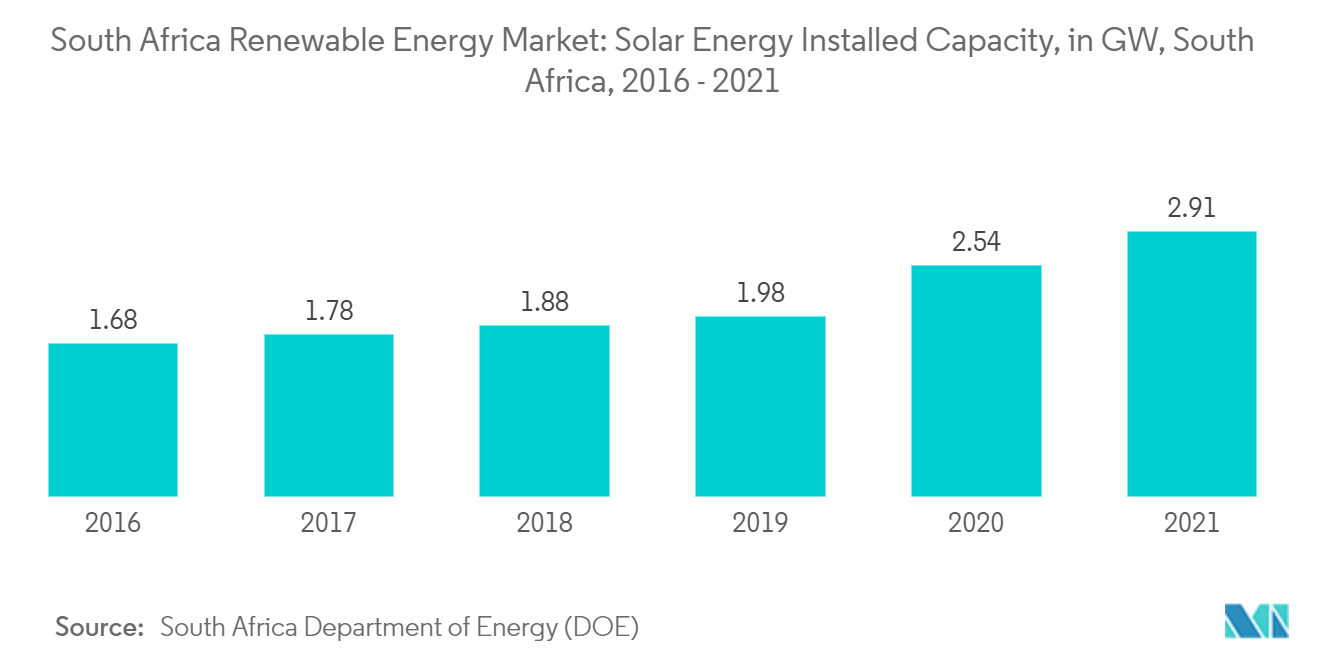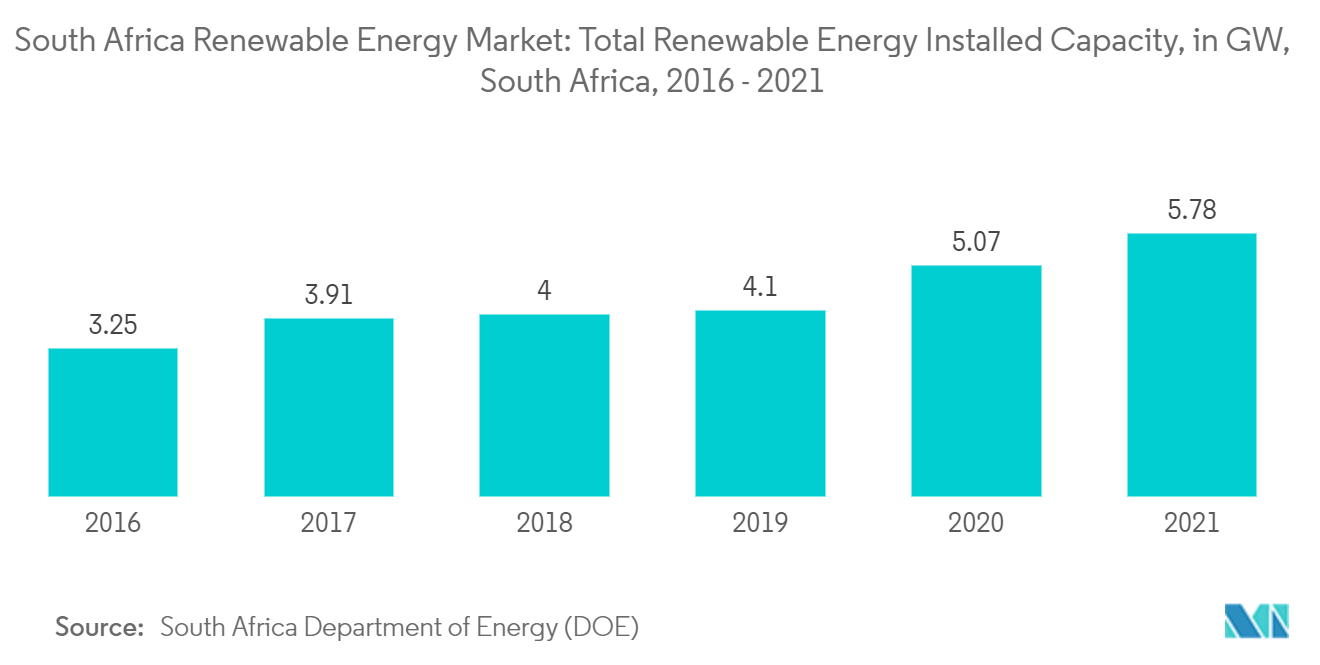Market Trends of South Africa Renewable Energy Industry
This section covers the major market trends shaping the South Africa Renewable Energy Market according to our research experts:
Solar Energy is Expected to Dominate the Market
South Africa is one of the leading countries in receiving sunlight. In most parts of South Africa, there is a presence of sunshine for more than 2,500 hours per year, with average solar radiation levels ranging between 4.5 and 6.5 kWh/m2 in one day.
The annual 24-hour global solar radiation average in South Africa is 220 W/m2, which is higher than in various parts of the United States, which has around 150 W/m2, and the European Union, which has about 100 W/m2. Solar energy is considered the most readily available resource in South Africa, leading to several potential applications, such as power generation and water heating. Due to the rise in investment in solar-based energy in South Africa, the country's solar-equipment industry is also witnessing development.
The installed solar energy capacity for South Africa in 2021 was 2.91 GW, and it is expected to increase in the coming years. The solar energy installed capacity in South Africa accounts for more than 50% share of the total renewable energy mix.
The South African government aims to reach net-zero emissions in 2050. The government is strategically investing in renewable energy projects, particularly solar and wind, to achieve this ambitious target. In South Africa, solar energy is harvested by two methods, which are concentrated solar energy and photovoltaic power. As of 2022, the total installed capacity of concentrated solar energy is around 500 MW, and the photovoltaic power installed capacity is around 2,885 MW.
In February 2022, Redstone concentrated solar energy project, a 100MW integrated CSP plant, secured financing of USD 764.63 million and the commitment of USD 151.95 million. The project has received financing from international and South African financial institutions, including ABSA Bank, CDC Group, Development Bank of Southern Africa (DBSA), Deutsche FMO Investec Bank, Nedbank Limited, Sanlam Limited, and the Industrial Development Corporation of South Africa. The project is anticipated to be operational by the end of 2023.
In March 2022, Amazon launched a 10-megawatt solar plant in Northern Cape Province, South Africa. The plant is expected to generate more than 28,000 MWh of energy annually. The solar plant comprises over 24,000 bifacial solar panels and covers an area of 20 ha in the Northern Cape.
In March 2022, Tronox Holdings entered into a long-term power purchase agreement (PPA) with the independent power producer SOLA Group to provide 200 MW of solar power to mines and smelters of Tronox in South Africa. The project is expected to complete by the fourth quarter of 2023.
Therefore, due to the above-mentioned factors, the solar energy segment is expected to dominate the market during the forecast period.

Supportive Government Policies and Programs is Driving the Market's Growth
The South African government has taken initiatives pertaining to the energy market to achieve a range of objectives to ensure affordable access to electricity, encourage decarbonization of the energy systems, boost economic development, and improve energy security. South Africa has implemented some support policies and subsidies for renewable energy to achieve clean energy transition goals.
For instance, the South African government launched the South African Renewable Energy Independent Power Producer Procurement Programme (REIPPPP), a competitive tender process designed to facilitate private sector investment in grid-connected renewable energy generation in South Africa. As of 2021, the REIPPPP program attracted about USD 13 billion of private capital to construct and operate 77 solar and wind facilities.
According to the International Institute of Sustainable Development, South Africa's Energy subsidies have tripled since 2017; in 2020, they were valued at about USD 10.4 billion. The country increased fossil fuel taxes to keep pace with the growing demand and boost investment in renewable energy. However, most subsidies were given to fossil fuels and coal-fired electricity.
In April 2022, the Department of Mineral Resources and Energy (DMRE) launched the sixth bid window under the Renewable Energy Independent Power Producer Procurement Programme (REIPPPP), seeking proposals for 2.6 GW of new renewable generation. The tender capacity is split between 1.6 GW of onshore wind and 1 GW of solar photovoltaic (PV).
The total installed renewable energy capacity for South Africa in 2021 was 5.78 GW, which is expected to increase in the coming years.
Government policies, programs, and initiatives are expected to drive the development of the renewable energy market in the country. According to the Climate Investment Funds, the capacity of new renewable power generation will reach about 20 GW by 2030.

